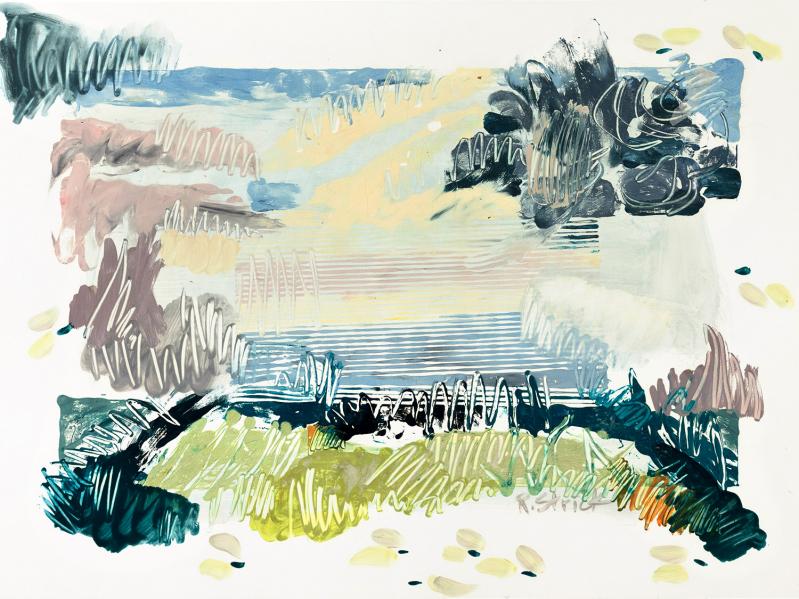East Hampton's Drawing Room gallery brings two artists together who may cause casual observers to scratch their heads. These days, Sheridan Lord and Racelle Strick are hardly household names, but they did have a rich exhibition history during their lifetimes.
Recently, Lord, who died in 1994, has been popping up in exhibitions around the South Fork. Strick, who died in 2008, is more elusive, but was a regular in solo shows at the Benson Gallery in Bridgehampton around the early 1970s and in New York City at various galleries. Both are in the collections of area and city museums.
They are now featured in dual solo shows at the Drawing Room, linked by the organizers in their serendipitous purchases of houses here within a year of each other. In 1967, Strick built a modernist house befitting her artistic aesthetic in Bridgehampton, not far from the ocean. In Sagaponack, Lord found a farmhouse, also befitting his aesthetic, just a few miles away.
Their approach to their similar surroundings could not be more different while still showing evidence of the same inspiration. Yet a closer look, a literal hop from room to room, reveals more in common in terms of color, composition, and form than might otherwise be suspected.
In these shows, the works are pretty tightly selected by date. Strick's pieces are monotypes, almost all from around 1982, and three from 1980 with a different compositional framework and style, more striated and geometric in organization and abstraction. There is also a very dark and much larger acrylic on canvas from around 1970 for context.
Lord's work is from the late 1970s and early '80s. In his exhibition history, terms like "place," "regionalism," "East End," and "Long Island" seem to recur often enough to make an impression. Even without seeing the work, you might get some idea of what it looked like. The artist takes a frank approach to not just this area, but his immediate surroundings, with views captured from a window or off in a not-too-far-away distance.
The paintings here, all oil on linen, are both stark and a bit gauzy. There is a good deal of haze in his work. The titles all capture the months in which they were painted, but except for a colder grayish atmosphere in a painting made from January into March of 1982, the sky does not vary as much as might be expected. The gradations, like the paintings themselves, are subtle.

Lord appears to want the viewer to linger, to realize these are not just pretty trifles but something meatier, that there is indeed a sense or even spirit of place. As much as Sagaponack has changed in the years since he froze these vistas in time, with those same open areas now dotted with large houses and hedgerows, its core properties, distilled to an essence, are indelible.
Like Robert Dash's views of Sagg Main Street, which are more abstracted and in a way more emblematic, Lord takes these everyday subjects and raises them to something just shy of paradigm. Shy, because it seems the idea is to be quiet and humble, like the natural surroundings, unlike the current built environment.
In the room devoted to Strick, the purely striated paintings look wholly abstract, even as one senses the shape of a building in one, and a view from a window in another. Their purpose may be to show that the monotype prints from 1982 were singular in style and choice of compositions.
In those, striations remain but become one of a few compositional elements that include patches of paint and squiggles within them. In one case they are jettisoned completely, a break with the order and strictures imposed on the 1980 works. The later series has more unconstrained exuberance. Fun seems to be being had as the artist places land, sea, and sky in some kind of expressionistic horizon.
A 1974 examination of Strick's work in Artforum states correctly that "one is always aware of the process of making; the whole image constantly refers back to the systematic structuring of its parts." This is just as true here. As you look at the whole, you are constantly aware of the parts, and vice versa.
Strick's works are just as specific in their "place" as some of her neighbor's paintings, if one spends time looking at them. It is diverting to imagine these artists out on the same day, taking in their surroundings, and finding inspiration in their own ways.
The exhibition is on view through Nov. 19.




